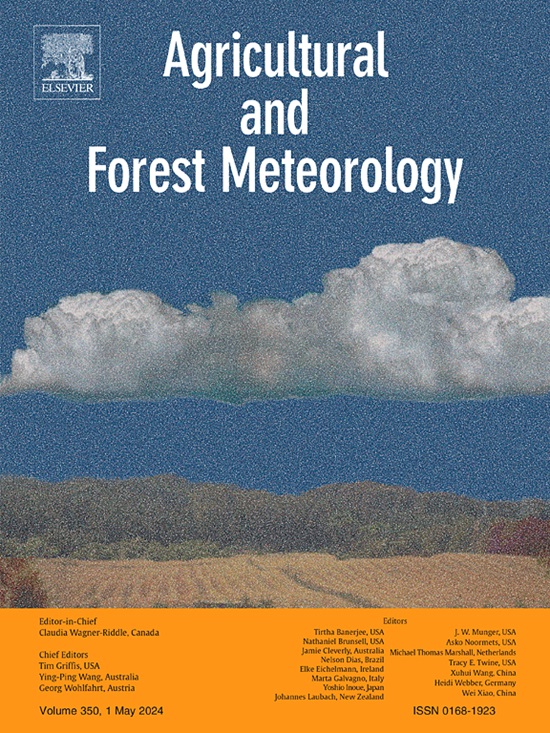A novel approach for estimating evapotranspiration by considering topographic effects in radiation over mountainous terrain
IF 5.6
1区 农林科学
Q1 AGRONOMY
引用次数: 0
Abstract
Mountains are one of the hotspots of climate change, and their complex morphology makes the monitoring of water and energy fluxes extremely challenging. Evapotranspiration (ET) is a crucial component of the water cycle and energy budget and its accurate estimation is essential for water resources management and ecosystem protection in mountains. It has been reported that the topography substantially controls the distribution of ET in mountainous terrain. However, most of the existing models neglect the impact of topography, leading to considerable errors and deviations for ET simulation. To address this issue, this study proposed a terrain-extended ET model (TEEB) based on the principle of energy balance, which can be used for ET estimation over complex terrains. Given the substantial impact of topography on net shortwave radiation (NSR), the mountain radiative transfer scheme was employed for NSR estimation, the net radiation model considering topographic effects was then constructed. Soil heat flux and sensible heat flux were then estimated from net radiation. The proposed TEEB model was tested using data from seven eddy covariance (EC) flux towers and a multidimensional comparison was made with the most widely used Surface Energy Balance Algorithm for Land (SEBAL) model. Regarding the results, the simulation of the TEEB model had a high consistency with EC measurements, with a root-mean-square-error of 0.713 mm/d, and was significantly superior to the SEBAL model. Moreover, the spatial pattern of estimated ET with the TEEB model exhibited distinct topographic characteristics, such as the ET on shady slopes being much lower than on sunlit slopes. Meanwhile, topographic analyses revealed that ET estimates on shady slopes would be reduced by 46 % with a proper consideration of topographic effects. The TEEB model can improve the estimation accuracy of ET in mountains, and provide a useful reference for maintaining ecological balance and optimizing water resources management.
求助全文
约1分钟内获得全文
求助全文
来源期刊
CiteScore
10.30
自引率
9.70%
发文量
415
审稿时长
69 days
期刊介绍:
Agricultural and Forest Meteorology is an international journal for the publication of original articles and reviews on the inter-relationship between meteorology, agriculture, forestry, and natural ecosystems. Emphasis is on basic and applied scientific research relevant to practical problems in the field of plant and soil sciences, ecology and biogeochemistry as affected by weather as well as climate variability and change. Theoretical models should be tested against experimental data. Articles must appeal to an international audience. Special issues devoted to single topics are also published.
Typical topics include canopy micrometeorology (e.g. canopy radiation transfer, turbulence near the ground, evapotranspiration, energy balance, fluxes of trace gases), micrometeorological instrumentation (e.g., sensors for trace gases, flux measurement instruments, radiation measurement techniques), aerobiology (e.g. the dispersion of pollen, spores, insects and pesticides), biometeorology (e.g. the effect of weather and climate on plant distribution, crop yield, water-use efficiency, and plant phenology), forest-fire/weather interactions, and feedbacks from vegetation to weather and the climate system.

 求助内容:
求助内容: 应助结果提醒方式:
应助结果提醒方式:


